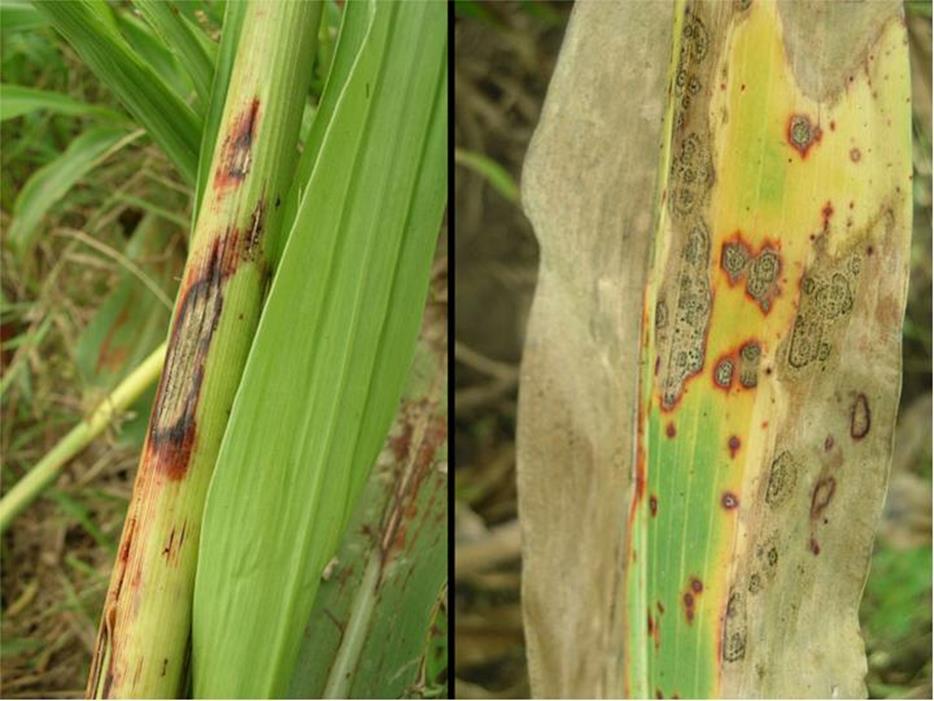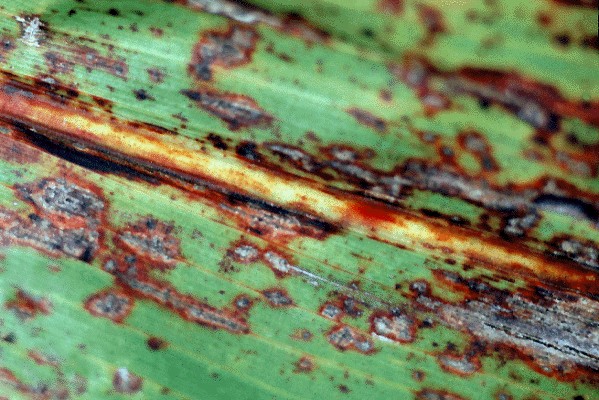Anthracnose of Sorghum is a disease that affects sorghum plants, which are grown in many places worldwide, including India. It’s caused by a variable pathogen. One way to fight the disease is by using sorghum plants that can resist it. But we need more options for resistant plants to make sorghum better.
To find these resistant plants, researchers use collections of sorghum seeds from different places, called germplasm collections. In Mali, a country in Africa, they took 132 kinds of sorghum from the Sikasso area and tested them. They made the plants sick on purpose with a fungus called Colletotrichum sublineolum, which causes anthracnose of Sorghum. They did this in Puerto Rico in 2004 and 2005.

Out of these 132 sorghum types, 109 didn’t get very sick. Only 23 got sick a little, and only one got very sick. The sorghum plants that didn’t get sick are called resistant. Most of the resistant plants came from parts of Mali that get more rain. More than 80% of the sorghum from the Bougouni and Sikasso areas were resistant. The ones from Sikasso were the strongest, with only 1.5% of their leaves getting infected.
In a dry area called Koutiala, 71% of the sorghum plants were resistant, but they got a bit more sick than the ones from Sikasso. The ones from Sikasso were mostly a type called ‘race guinea,’ and the ones called ‘margaritiferum’ were all resistant.
This shows that the Sikasso area in Mali has sorghum plants that can fight anthracnose. It also tells us that where the plants come from and what type they are can help us pick the best ones to test for anthracnose resistance.
Anthracnose of Sorghum Symptoms:
- Leaf Lesions: Many lesions can appear on a single leaf, merging together to kill large parts of the leaf.
- Mid-rib Infection: Infection often extends to the mid-rib, creating elongated red or purple lesions. These lesions have visible black acervuli.
- Stem Infection: Infected stems, when split open, display discoloration. This can be continuous across a wide area or have a marbled appearance, depending on the sorghum variety.
Also Read: Rust of Sorghum: Symptoms, Impact and Management in 2023
Anthracnose of Sorghum Management:
Preventing Method:
Izumonas-Best Fungicide
Contents: Pseudomonas Fluorescens
IZUMONAS is a biological product consisting of plant growth-promoting rhizobacteria (PGPR), which are naturally occurring bacteria found widely in nature. This unique product is designed to enhance plant defence mechanisms and promote healthy growth. IZUMONAS can be used on all types of crops without leaving any residue on the plants.
Izumil-Best Fungicide
Contents:
- Extract of Streptomyces griseus: 30%
- Extract of Streptomyces violaceus: 40%
- Dissolving agents: 30%
IZUMIL is a remarkable biotech research product that has been developed to activate the natural defence mechanism of plants. By using IZUMIL, plants can better protect themselves against fungal pathogens, improve their physiological functions, and develop resistance against various harmful microorganisms. Similar to IZUMONAS, IZUMIL can be safely used on all crops without leaving any residue.
Modes of Use:
- Seed Treatment: Mix 5-10 ml of IZUMONAS and IZUMIL per kilogram of seeds in an adequate amount of water. Submerge the seeds in this solution and allow them to dry in a shaded area before sowing.
- Seedling Treatment: Combine 100 ml of IZUMONAS and IZUMIL per 20 litres of water. Dip the roots of the seedlings in this solution for approximately 30 minutes prior to transplanting.
- Soil Application: Mix 500 ml of IZUMONAS and IZUMIL with 30 kilograms of farmyard manure (FYM) or soil. Apply this mixture to one acre of land before ploughing or irrigation.
- Foliar Application: Dilute 2-3 ml of IZUMONAS and IZUMIL each in 1 litre of water. Use this solution to spray the entire foliage of the plants, ensuring complete coverage on both sides of the leaves. It is advisable to shake the bottle before use. For best results, spray early in the morning or evening. If a power sprayer is used, double the recommended dosage.
Also Read: Long Smut of Sorghum: Symptom, Disease Cycle, and Managemen
Cultural Method:
- Choose Resistant Varieties: Pick sorghum types that are known to resist the disease and are suitable for your region.
- Healthy Seeds: Always use seeds from a trusted, certified source to ensure they are disease-free.
- Avoid Infected Seeds: Never use seeds from fields that have the disease.
- Plant Early: Start planting early in the season to avoid the conditions where the disease thrives.
- Quick-Maturing Varieties: Opt for sorghum varieties that mature faster; they are less likely to get infected.
- Regular Field Checks: Keep an eye on your sorghum field for any signs of the disease.
- Remove Infected Plants: If you spot infected plants, remove and destroy them, such as by burning them.
- Weed Control: Manage weeds well to prevent them from hosting the disease and spreading it.
- Crop Rotation: Consider planting crops that are not susceptible to the disease in between sorghum seasons to break the disease cycle

